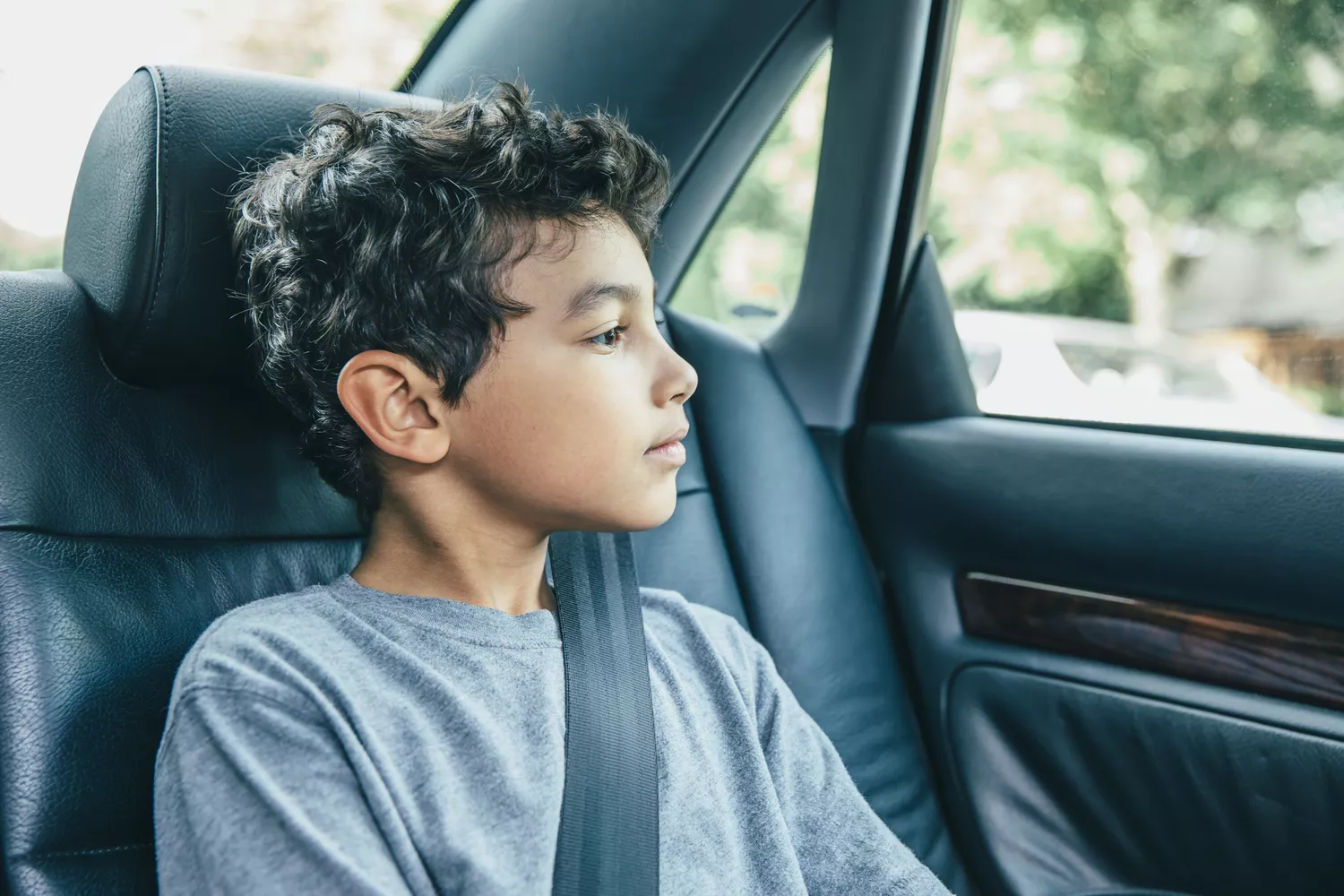When can my child sit in the front seat?


You may wonder, as your child grows older, when it is okay to let him or her sit in the front of your vehicle. You may be rushing them between activities, or you might have noticed that some of their friends are sitting in the front seats at school pickup.
The musculoskeletal system is still developing, so they are more susceptible to injury.
We spoke to pediatricians to find out more about the age at which children can ride in the front, the importance of waiting until that time, and the dangers of moving too soon.
What age can children sit in the front seat of a car?
Children can safely sit on the front seat of a car when they are 13 years old. The American Academy of Pediatrics recommends that children aged 12 and younger sit in the rear seat of a car. 2
From birth, infants should be buckled into a rear facing car seat. After they are old enough, they can sit in a forward-facing car seat up to age five.
The age range for children who outgrow their car seat is between 8 and 12 years old.
It’s best to wait until your child is 13 years old. The back seat will always be safer.
Mom Shares Her Story To Warn Other Parents About Safety Of Car Seats
How much weight does a child need to be to sit in the front seat?
4 When it comes to safety, age is more important than weight.
The bones of children are still growing and therefore softer than those of adults. Seat belts might not stay in place in a car accident due to an immature development of the pelvic bones, says Maneesha agarwal, M.D. a pediatric emergency room physician at Children’s Healthcare of Atlanta, who specializes car safety and treats many patients involved in accidents.
The Risks of Moving an Infant to the Front Seat Early
Since children are smaller than adults, an airbag may be deployed at their level of head, says Jennifer McCue. She is the Injury Prevention Coordinator at Nemours Children’s Hospital in Delaware. This can lead to serious head and neck injuries or even death.
The skeletal system of children is still developing and can also increase the risk of injury. Children’s bones are less dense and more flexible than adults’, which puts them at greater risk . The front seat places your child closer to the impact point in an accident, while the rear seat is more protective of their fragile skeleton.
Safety Check for Car Seats: Avoid the 9 most Common Mistakes
How to keep children safe in the front seat
If your child reaches the age of 13, you might still be nervous about moving them to the front seat. Here are some safety tips for riding in the front:
- Never allow your child to put the shoulder belt under their arm or behind them. Never let your child put their shoulder belt behind or under them.
- The feet should not rest on the dashboard, but the floor.
- If the shoulder belt doesn’t rest in the middle of your child’s shoulder, use a booster.
- Children should not move around when they are sitting. McCue says, “Remind kids not to turn around or lean forward in order to grab something they may have dropped. This puts the seatbelt in an incorrect position.
If in doubt, it’s always best to sit on the back seat
It’s safer for your child to sit in the front seat by age 13 because their bones are harder and denser. They’re also taller. The back seat has always been considered to be the safest because it is farther away from the impact point in a crash.
Dr. Agarwal says, “Don’t hurry to get your child in the front seat.” “Make sure that your child is old enough to be seated properly for the duration of the ride, without engaging in potentially hazardous behaviors like moving the strap behind them or propping their feet on dashboard.”
Remember to always choose the backseat for children under 12 years old.











